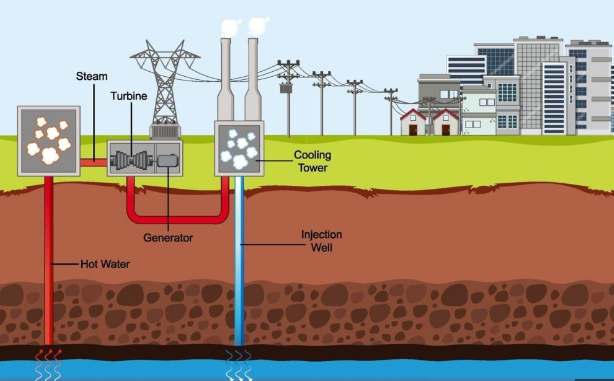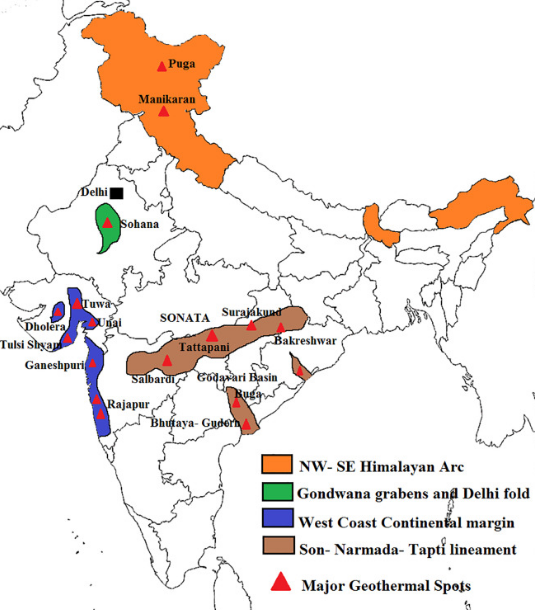7667766266
enquiry@shankarias.in
Recently, Minister of New and Renewable Energy has highlighted that Indian government is working on extensive exploration of potential geothermal site in India and in developing pilot plants.
Molten rocks formed in the deeper hot regions of earth’s crust are pushed upward and trapped in certain regions called ‘hot spots’.

